Mastering Bird Spotting: Techniques and Insights
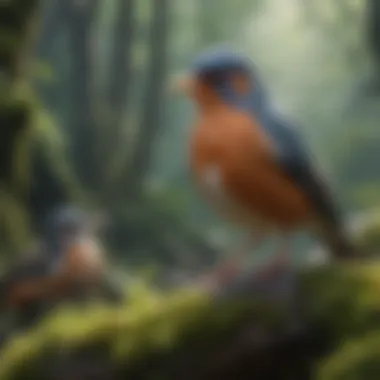
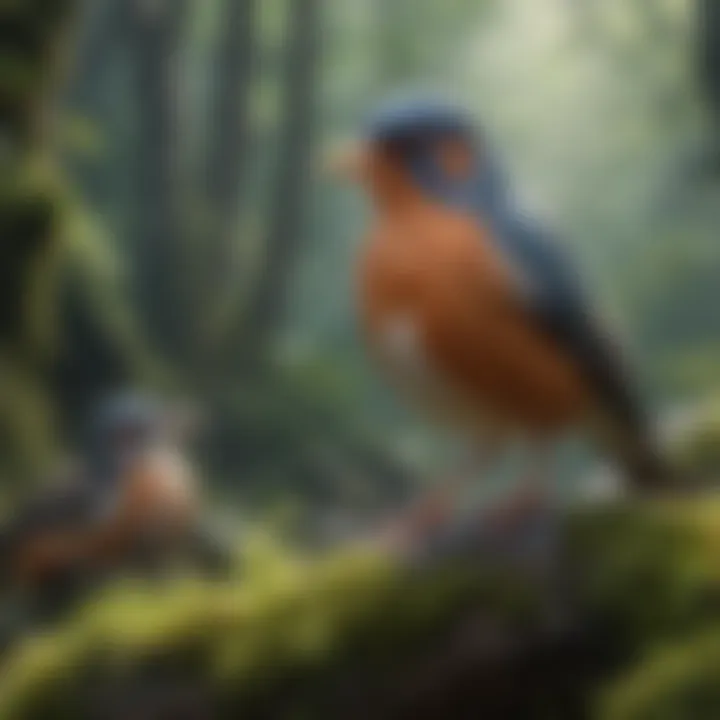
Intro
Bird spotting offers a fascinating blend of art and science, uniting the sharp eyes of enthusiasts with the intricacies of the natural world. Whether you’re a seasoned birdwatcher or just starting to dabble in this rewarding hobby, understanding the deeper nuances of engaging with avian life can truly enhance your experiences. This exploration will lead you through essential techniques, recommended equipment, and an array of bird species you may encounter, transforming your outings into rich, educational adventures.
Bird spotting isn’t merely a passive activity; it invites participants to be actively engaged, breathing in the beauty around them while adopting a patient, observant approach. From a quiet meadow to a busy urban park, opportunities for spotting a variety of species abound. However, without the right understanding and tools, you might miss what’s right before your eyes.
As we journey through the complexities of bird spotting, we’ll uncover the ethics of the practice, discuss how changing seasons affect bird behavior, and highlight the impact this activity can have on fostering a deeper appreciation for nature. We aim to arm both beginners and experienced birders with valuable insights that will enhance their outings, cluing them into the subtle but significant details that make each spotting unique. Let's get started!
Preface to Bird Spotting
Bird spotting is more than just a pastime; it is a harmonious blend of art and science that invites enthusiasts to observe, appreciate, and connect with avian life. This introductory section aims to highlight the significance of bird spotting and set the stage for a deeper exploration of this engaging subject.
At its core, bird spotting fosters an understanding of the intricate behaviors and habitats of various species, serving as a thoughtful reminder of nature's delicate balance. Whether you're standing by a serene lakeside, peering from a forest edge, or simply gazing out a window, spotting birds can create enriching experiences. Spending time outdoors not just offers health benefits but also instills a sense of wonder and curiosity about wildlife.
For families, bird spotting presents a fantastic way to bond with one another, sparking conversations around nature and conservation. As children learn to identify different birds, they develop valuable observational skills that extend beyond this hobby. In doing so, adults and kids alike uncover stories of migration, feeding habits, and seasonal changes in the avian world.
Defining Bird Spotting
Bird spotting, often referred to interchangeably with birdwatching, involves identifying various bird species in their natural environments. This practice may appear simple at first glance, yet it encompasses a diverse array of techniques, experiences, and even emotional connections with the natural world. It allows enthusiasts to witness moments that blend joy, excitement, and curiosity, as they search for the next feathered friend.
The beauty of bird spotting lies in its accessibility. One does not need to become an ornithologist to appreciate the diversity around us. Armed with a pair of binoculars and a desire to connect with nature, anyone can embark on their avian adventures. This also implies that bird spotting can be enjoyed solo or in groups, thus fostering friendships and expanding one’s network within the birding community.
The History of Bird Watching
The history of bird watching is as rich and varied as the species it seeks to observe. Although the formal study of birds began fairly recently, the roots of bird observation are deep within human culture. From ancient civilizations communicating through drum signals to announce migrating flocks to the Renaissance period when nature lovers began documenting their finds, bird watching is an age-old endeavor that transcends generations.
In the 19th century, as interest in natural history burgeoned, the practice of keeping field notes gained traction. Artists, poets, and scientists began observing birds not just for their aesthetic beauty but for their ecological roles. This era paved the way for notable publications, such as The Birds of America by John James Audubon, which not only celebrated avian diversity but also heightened public awareness of the need for conservation.
Over the years, birding transformed into a mainstream hobby, attracting individuals from all walks of life. Today, technology plays a critical role in this evolution, with apps and online platforms connecting bird watchers worldwide. As digital resources expand, they continue to inspire a passion for bird spotting that honors its long-standing history while embracing the future of conservation and appreciation.
Essential Equipment for Bird Spotters
When it comes to bird spotting, you can’t just waltz into nature with nothing but hope and a half-hearted commitment. The craft demands a certain set of tools to amplify both your experience and success in the field. The right equipment does not only aid in identification and observation; it opens up a dialogue with nature, making every outing possible and thoroughly engaging. In this section, we’ll explore the cornerstone tools you need, shedding light on their specific roles and how they contribute to the art of bird spotting.
Binoculars: Choosing the Right Pair
Binoculars often serve as the lifeline between you and the avian world. When selecting binoculars, clarity of vision can be the real game changer. A good pair should boast a magnification of 8x to 10x, providing enough zoom to spot a creature perched delicately on a branch without causing it any undue alarm. But do consider the field of vision too; you don’t want to squint through a tube and miss the scenery around it.
The weight of the binoculars also plays a key role. Heavy bins might tire your arms, especially during extended sessions. Look for a balance between sturdiness and lightness. Waterproof models might seem like overkill, but once you find yourself out in the wild during a surprise downpour, you’ll be glad you made that plunge.
Key Things to consider:
- Magnification: At least 8x for decent clarity.
- Light Transmission: Look for at least 90% for better performance in low light.
- Weight: Light models are easier to manage for long durations.
Field Guides and Apps
Nothing shines a light on the feathered wonders around you like a good field guide. Whether it's a physical book or a mobile application, these guides are invaluable for quick identification. They usually include pictures, descriptions, and range maps for various species. When selecting a field guide, consider one that focuses on your region; a guide that covers a localized area is likely to provide more applicable information.
In the modern age, translation to mobile apps like Merlin Bird ID can enhance your spotting endeavors. These platforms often feature interactive quizzes to help you learn and narrow down potential species based on physical traits and locations. Plus, apps can offer additional features, like sound recognition to help with identifying bird calls.
Recommended Features:
- Images: High-quality pictures make identification easier.
- Range Maps: Understanding where species are likely to be found.
- Interactive tools: Like sound recognition or identification quizzes, enrich the experience.
Notebooks and Recording Tools
An often-overlooked aspect of bird spotting is documentation. Keeping a notebook in your backpack might not seem essential until that moment arises when you've witnessed something peculiar. A simple notepad allows you to jot down notes on sightings, behaviors observed, and even sketches, if you're artistically inclined.
There are even specialized journals designed for bird watchers, featuring prompts for recording date, time, location, and species observed. Some enthusiasts take it a step further and use apps or software tailored for logging sightings while out in the field, turning an everyday hobby into a scientific record.
Tips for effective recording:
- Note the Date and Time: This is crucial for tracking migratory patterns.
- Location Matters: Jot down exact locations for future visits.
- Behavior Observations: Include how the bird acted or interacted with its surroundings.
"Observation is the key to understanding the world of birds; every note you take contributes to that understanding."

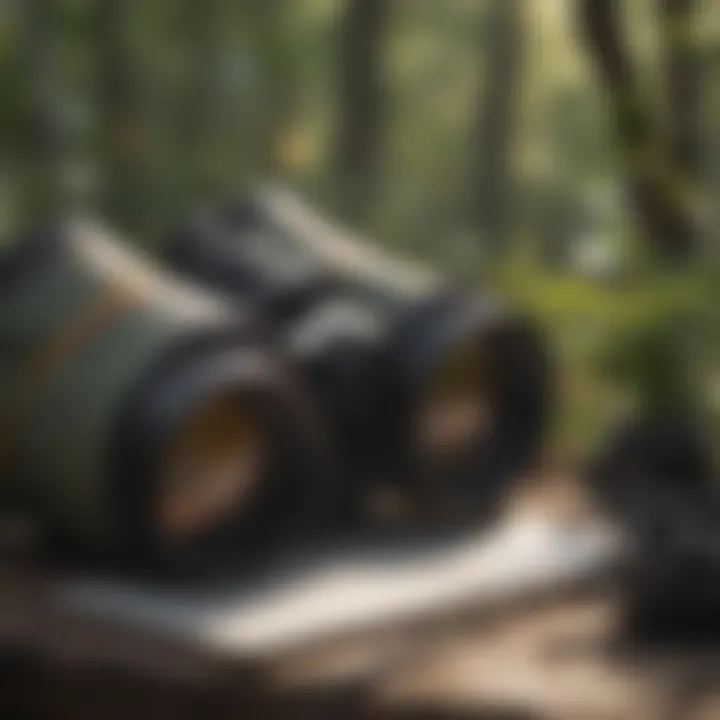
Each of these tools not only aids practical spotting but helps in building a personal connection with the subject. Investing in the right equipment ensures that your bird spotting experiences are rich, rewarding, and possibly even enlightening.
Key Techniques for Successful Bird Spotting
Bird spotting goes beyond just aiming binoculars at a feathered creature. It's a blend of art and science that demands an understanding of various techniques. Mastering these skills can make the difference between a fleeting glimpse and a rewarding observance.
Understanding Bird Behavior
Understanding the behavior of birds is akin to cracking a code. Each species has its own quirks, and by learning these, bird spotters can greatly enhance their spotting success. For instance, many birds are often seen foraging during certain times of the day, particularly at dawn and dusk. During these times, they are less wary, making it easier to approach unnoticed. Additionally, paying attention to their social dynamics—like territorial displays or feeding habits—can yield rich opportunities for close observation.
A few key behaviors to observe include:
- Feeding habits: Understanding what they eat can indicate where they are likely to be found. For example, an insectivorous bird may hang around areas rich in insects.
- Territorial displays: Spring brings out the territorial nature in birds, which can be a great time to witness male birds singing or facing off.
- Flocking behavior: Some birds, like starlings, are known for their spectacular aerial displays in flocks. Observing these birds can provide a beautiful sight.
The Importance of Patience
Patience is often said to be a virtue, and when it comes to bird spotting, it's more of a necessity. Birds can be unpredictable, and the key to a fruitful spotting venture often lies in simply waiting quietly.
When one ventures into a natural habitat, it’s easy to want immediate results, but this mindset can lead to missed opportunities. Standing still, letting time pass, often brings about the thrill of an unexpected sighting. One might wait for a while, only to have a rare bird flit across the line of sight when least expected.
Consider the philosophy of slow travel. Embracing this approach allows observers the gift of time—time to listen, to feel, and to integrate with the environment. A spotter could bring a thermos of coffee and a good book, blending the enjoyment of nature with the pleasure of being in the moment.
Techniques for Observing Quietly
Silence in the field can be more than just honoring the tranquility of nature. Mastering quiet observation techniques can be a game-changer when trying to spot birds. Here are some practical methods:
- Approach Carefully: Learning to walk softly can prevent alarming birds. Choose routes that won't rustle leaves or snap twigs.
- Minimize Movement: Once you find a good spot, stay as still as a statue. Birds pick up on movement, and a sudden gesture can send them flying.
- Use Natural Cover: Hiding behind trees, bushes, or even tall grass can help you blend into the surroundings, offering glimpses without raising alarm.
Using these techniques not only maximizes your spotting potential but also allows for a deeper connection with the environment. As you become more attuned to nature, every rustle or chirp can transform into a moment to relish.
Identifying Birds by Appearance
Identifying birds by their appearance is a cornerstone of bird spotting. It's not just about ticking off species in a field guide; it's about connecting with nature in a truly visceral way. Recognizing birds by their physical traits allows birdwatchers to develop a deeper understanding of these creatures and their habitats. Moreover, for families with children or animal lovers, this practice fosters curiosity and encourages outdoor exploration, nurturing a bond with the environment.
To rightly identify birds, one must pay attention to a variety of physical features. From plumage color to beak shape, each attribute plays a significant role in distinguishing one species from another.
Common Bird Features to Recognize
When scanning the skies or treetops, there are several key features to consider:
- Size and Shape: Knowing whether a bird is small, medium, or large can narrow down possibilities right from the start. For instance, a sparrow is much smaller than a hawk.
- Coloration: The hues of a bird's feathers can be striking. Bright colors often signal specific species; for example, the vibrant red of a Northern Cardinal is unforgettable. However, take care, as some species may have variations depending on their gender, and seasons may affect their appearance.
- Beak Type: Different birds have different needs, and their beaks reflect that. A woodpecker has a strong, chisel-like beak for drilling into trees, while a hummingbird's slender beak is perfectly suited for sipping nectar.
- Wing Patterns: Closed wings can often show distinctive patterns that aid identification. Take the time to observe how a bird flies to note the characteristics of its wings.
"Understanding the basic features of birds is the first step in appreciating the great diversity of avian life. With a little patience, you can become quite adept at recognizing them."
Take up a field guide for help; these guides often have images and comparisons to help clarify what you’re seeing. As you make your rounds in parks or nature reserves, the thrill of spotting a new bird becomes an addictive pursuit.
Learning Bird Calls and Songs
Bird calls and songs are another layer to the identifying puzzle. While appearance gives you visual cues, auditory signals can reveal a lot about the bird’s identity and behavior. Each species tends to have a unique call; some are sweet and melodic, while others can be sharp and alarming.
Here are some points to help you get started on this auditory journey:
- Listen Regularly: Spend time in areas where birds are abundant. At dawn and dusk, the sounds are particularly lush and layered.
- Use Apps: Nowadays, people use smartphone applications designed to help identify bird songs. An app like Merlin Bird ID can transform your learning experience!
- Practice Mimicry: Try to mimic the calls you hear. This playful practice can help imprint the sounds in your memory and is a fun activity for kids too.
- Group Similar Sounds: Many birds fall into categories of calls. For instance, thrushes often have melodious songs, while crows possess a cawing call. Recognizing these groups can simplify the identification process.
By combining your observation skills with your growing knowledge of bird calls, you will enhance not only your ability to identify birds but also your overall appreciation for these magnificent creatures in their habitats.
Seasonal Changes and Bird Movements
Understanding the seasonal changes and bird movements is vital for anyone interested in bird spotting. Changes in seasons dictate the migratory patterns of many bird species, influencing what birds you might see at different times of the year. By grasping these patterns, bird watchers can effectively plan outings to view certain species, thus enhancing their spotting experience.
Migration Patterns
Migration is typically the first thought that comes when discussing seasonal changes in bird populations. Many bird species undergo remarkable journeys each year as they move from breeding grounds to wintering habitats. This movement often occurs in response to temperature shifts, food availability, and breeding cycles.
Migration can be a challenging feat, with some birds traveling thousands of miles. For instance, the Arctic Tern is known for its epic migration from the Arctic to the Antarctic and back, covering about 40,000 kilometers each year.
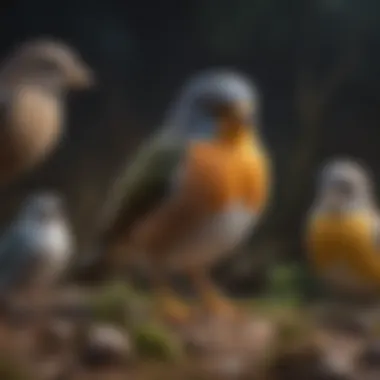
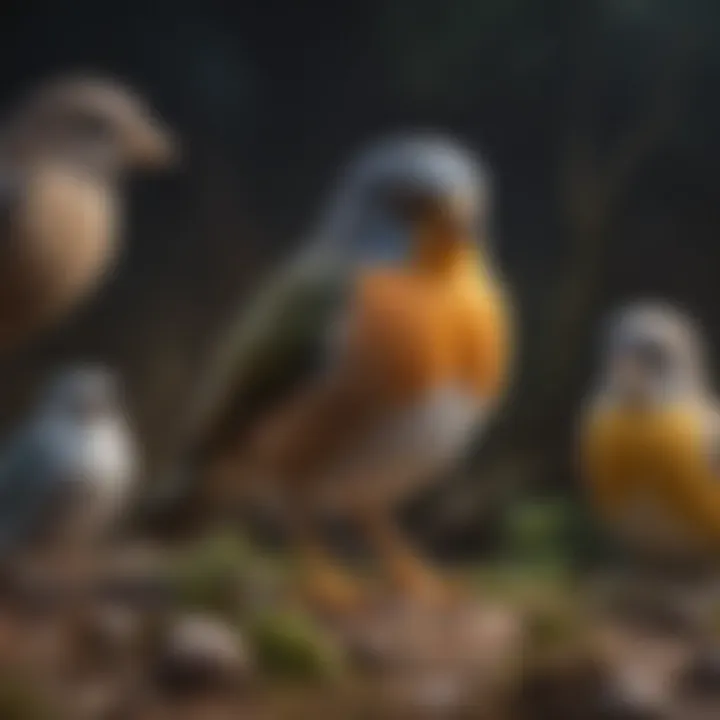
Here are a few noteworthy points about migration patterns:
- Timing: Different species have varying migratory schedules. For example, some may leave early in the spring while others delay their departure until later. Knowing these timelines is crucial for spotting the right birds.
- Routes: Birds often stick to specific flyways, which are established paths they take repeatedly. Areas along these routes, such as the Atlantic Flyway in the U.S., become hot spots for bird watchers.
- Visual Cues: Changes in daylight and temperature can trigger migration. Bird spotters should keep an eye on these environmental signs to predict when migration peaks.
Being familiar with these migration patterns allows enthusiasts to anticipate what birds might be present in their local area at any given time of the year.
Wintering Birds and Their Habitats
As temperatures drop, many birds either migrate to warmer regions or adapt to harsher conditions. This brings to light the fascinating world of wintering birds. Some species, like the American Robin and the Northern Cardinal, can still thrive in colder climates, while others prefer to retreat to milder areas.
Wintering bird habitats can vary significantly:
- Coastal Areas: Birds like ducks and shorebirds tend to flock to coastal regions where food is abundant and temperatures are milder.
- Woodlands: Dense forests provide shelter and food sources for species like Woodpeckers and Chickadees.
- Urban Environments: Surprisingly, cities can also attract birds during winter. Many can adapt well, as urban areas often provide food and nesting sites.
Spotting wintering birds offers unique challenges and rewards; there’s something quite special about recognizing a familiar species against a backdrop of stark, snowy landscapes or understanding that the songs of birds have shifted as their populations change with the seasons.
Popular Bird Spotting Locations
Bird spotting is an immersive activity that offers enthusiasts a chance to connect with nature and observe the diverse avian life around them. Understanding where to look for birds is as crucial as knowing how to identify them. Popular bird spotting locations not only provide varied habitats but also maximize your chances of encountering unique species. Whenever one embarks on this journey, considering the surroundings, accessibility, and the types of birds that frequent those areas becomes essential.
National Parks and Reserves
National parks and wildlife reserves present some of the most enriching environments for bird spotting. These protected areas are more than just large, open spaces filled with trees and lakes. They serve as sanctuaries that foster biodiversity, housing numerous bird species, some of which may only thrive in specific climates or habitats.
Visiting parks like Yellowstone or the Everglades can be a real treat. The expansive wilderness, diverse ecosystems, and absence of urban noise create an ideal setting for observing birds in their natural habitats. When scouting for birds, the key is to understand the characteristics of these areas:
- Variety of Habitats: From wetlands to forests to grasslands, these locations offer a plethora of living environments. Each habitat types attract different bird species.
- Protected Spaces: Birds feel secure in reserves, allowing for more natural behaviors and often easier spotting.
- Expert Guidance: Many national parks have rangers who might lead birdwatching tours or provide valuable insights into seasonal changes affecting bird populations.
Thus, national parks and reserves act like an open invitation to not only spot birds but also to appreciate the intricate web of life that exists in these ecosystems.
Urban Bird Communities
Don’t underestimate cityscapes when it comes to bird spotting. Urban bird communities thrive in surprising ways. Birds are adaptable creatures, and many have found their niche among skyscrapers, parks, and even residential areas. Observing birds in an urban setting is particularly fascinating because it highlights the resilience of wildlife adapting to human encroachment.
- Accessibility: Most urban areas are easy to access. Whether it’s a leisurely walk in a city park or a rooftop garden, bird spotting can be seamlessly integrated into daily life.
- Diverse Species: Cities attract a unique blend of species, some of which may be completely different from those found in rural environments. For example, pigeons, sparrows, and starlings are commonly found, but you may also spot more unusual visitors, like hawks or migrating warblers.
- Community Involvement: Urban environments often have active birdwatching clubs and organizations that host events, making it easier for enthusiasts to learn from each other and share their sightings.
In summary, whether you’re nestled in lush national parks or scanning the skies above a bustling city, the sheer variety of locations for bird spotting broadens the horizon of possibilities.
Birdwatching is not just about seeing birds; it’s about experiencing their world and understanding the delicate balance of nature.
By recognizing the value of both natural landscapes and urban settings, bird spotters can cultivate a deeper appreciation for the art of observing these remarkable creatures.
Ethical Bird Spotting Practices
Ethical practices in bird spotting are essential for ensuring that both birds and their habitats are respected and preserved. These practices not only safeguard wildlife but also enhance the experience for birdwatchers. Engaging with nature should come with a sense of responsibility, and spotting birds ethically is a key component of that relationship. When we consider our impact on the environment and the creatures within it, we cultivate a mindset that contributes positively to conservation efforts and the overall well-being of wildlife.
Respecting Wildlife
Respecting wildlife means understanding the life of birds and their needs. When observing birds, it is crucial to maintain a safe distance that does not cause undue stress. Birds are sensitive creatures; hence, approaching their nests or habitats too closely might disrupt their breeding behaviors. It’s generally advised to use binoculars to observe, rather than getting up close and personal.
Moreover, following rules in protected areas is vital. Many parks and reserves have designated viewing areas for good reason. Adhering to these guidelines helps to maintain the natural balance and ensures that other bird spotters can also enjoy the experience. Consider these points:
- Stay on trails: This helps prevent habitat destruction.
- No feeding: Feeding birds can alter their natural behaviors and diet, leading to health issues.
- Observe nesting seasons: Knowing peak breeding times can help spotters avoid areas with sensitive nestlings.
Incorporating respect into bird spotting not only benefits the species but also fosters a more meaningful connection to nature.
Minimizing Disturbance
Minimizing disturbance is another essential aspect of ethical bird spotting. Every interaction with wildlife should be as inconspicuous as possible. Birds can react to disturbances in various ways, such as abandoning their nests or fleeing from areas rich in food. Here are some tips on how to decrease your impact while enjoying birdwatching:
- Keep noise levels down: Sound travels, and even soft conversations can startle birds.
- Avoid sudden movements: Quick actions may scare birds away. Move deliberately and slowly to observe more effectively.
- Use natural camouflage: Wearing clothing that blends into the surroundings can help you go unnoticed.
By practicing these strategies, bird watchers can ensure that their presence does not disrupt the habitats they admire. Remember, for every bird you see, there are countless others who might not feel as secure in their environment.
"Respect for nature is essential to preserve the delicate balance existing between humans and wildlife. Each observer can be a steward of the natural world."
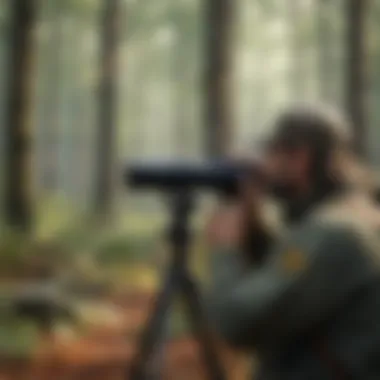
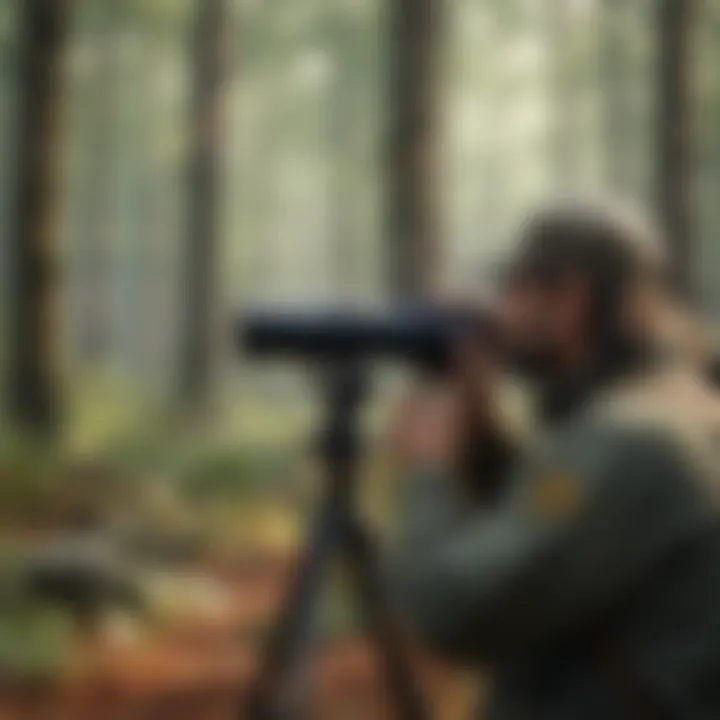
The Role of Bird Spotting in Conservation
Bird spotting doesn't just offer joy and relaxation; it also plays an integral role in conservation efforts around the globe. As birdwatchers immerse themselves in nature, their observations transform into valuable data that can influence environmental policies and encourage the protection of habitats crucial for avian life. Understanding this connection can deepen appreciation not just for birds, but also for the ecosystems they inhabit.
Citizen Science Contributions
Citizen science represents a clever way to merge passion with purpose. Bird spotting, in the hands of enthusiasts, becomes a tool for gathering data. Many platforms and organizations have tapped into the expansive network of birdwatchers. For example, projects like eBird allow users to submit their sightings, creating a vast database that aids scientists in tracking bird populations, migration trends, and even climate change impacts. This collective effort not only enhances scientific research but also fosters a sense of community among birders who are dedicated to the same cause.
"When we observe and report, we’re not just seeing birds; we're also contributing to understanding how our actions impact the environment."
Here are some significant contributions made by citizen scientists through bird spotting:
- Data Collection: Observations can help indicate when certain species arrive or depart from specific regions, which is crucial for understanding migration patterns.
- Trend Analysis: Regular reports on bird populations help organizations identify species that are endangered or experiencing decline.
- Awareness Raising: Citizen scientists often motivate their peers and communities to engage with nature, raising awareness about conservation needs.
This hands-on approach allows every birdwatcher—regardless of expertise—to contribute to broader conservation goals. When a community comes together for data collection, it fills critical gaps that professional researchers simply can't cover on their own.
Advocating for Habitats
Bird spotting leads not just to the collection of data, but to action. Many birdwatchers become advocates for local habitats, understanding that protecting these areas is vital for species survival. Conservation starts small, often rooted in the communities where these enthusiasts live and observe.
Promoting habitat conservation can take several forms:
- Collaborating with Local Organizations: Birdwatchers often ally with conservation groups, participating in restoration projects or educational programs.
- Lobbying for Protected Areas: When individuals gather evidence of significant bird populations in certain areas, they can influence policy decisions, urging governments to establish wildlife refuges or parks.
- Engaging in Public Education: Bird spotters are in a unique position to educate the public about the interdependence of species and healthy ecosystems. This helps to cultivate a love for nature in the younger generation, ensuring future advocates for conservation.
Ultimately, bird spotting nurtures an intrinsic connection between observers and the natural world. It fosters a culture of stewardship where individuals recognize their role in the larger environmental narrative. As the beauty of birds pulls people outdoors, it becomes a catalyst for meaningful conservation efforts that can ripple through ecosystems, benefitting not just birds but all wildlife.
The Community of Bird Spotters
The community of bird spotters is more than just a group of individuals with a shared interest; it embodies a network of support, learning, and shared passion for the avian world. Engaging with other bird enthusiasts can significantly enrich one’s birdwatching experience. You find that camaraderie with others who share your passion fosters a sense of belonging. Whether you are just starting out or have been observing birds for decades, these communities offer resources, insights, and a space for vibrant discussions.
One of the most significant benefits of being part of a birdwatching community is the practical knowledge shared among members. Local birdwatching groups provide opportunities not only to observe birds together but to learn from each other’s experiences and understand different locales. Imagine venturing out on a weekend with fellow enthusiasts, as each person brings their unique skills and observations to the table. You'd likely encounter not just new species but also gain insight into the often subtle cues that indicate bird behavior, enhancing your ability to spot and identify various species.
Birdwatching can sometimes feel like a solitary activity, especially if you’re out in the field by yourself. Connecting with local groups helps mitigate this, allowing participants to share stories, tips, and even organize outings to hotspots known for particular species. Many groups also conduct regular meetings where members can discuss their findings, showcase their photographs and share the latest in birding news. This back-and-forth exchange of ideas makes exploring our feathered friends even more rewarding.
"Birdwatching isn’t just about spotting; it’s about connecting with nature, and those connections are often strengthened in communities."
Local Birdwatching Groups
Local birdwatching groups serve as hubs of activity and learning in the birding community. These groups can be found in many towns and cities, often stemming from local wildlife organizations, universities, or even informal gatherings of passionate birders. Joining such a group often opens doors to unique experiences, like guided field trips, workshops on bird identification, and talks featuring renowned ornithologists.
Plus, these groups usually have the inside scoop on where to find specific bird species, which can be invaluable for spotters eager to expand their viewing repertoire. Here’s a few benefits of getting involved with local birdwatching groups:
- Field Trips: Organized outings provide a chance to explore local parks, wetlands, and conservation areas, often led by experienced members who can guide you to the best spots.
- Education: Many groups offer classes or talks on topics such as bird anatomy, migration patterns, and photography tips, enhancing your overall birdwatching skills.
- Social Connections: Making friends with like-minded individuals can make outings more enjoyable and can help you discover experiences you may not have pursued alone.
Joining a local birding club is not just about seeing more birds, it can ignite a lifelong passion for our natural environment. For those in urban areas, local groups can bridge the disconnect between city life and the beauty of nature, reminding us of the delicate ecosystems existing even amidst skyscrapers.
Online Forums and Resources
In the digital age, online forums and resources offer a wealth of information for bird watchers. Websites like Reddit’s r/birdwatching or Facebook groups dedicated to birding are superb platforms for sharing experiences, asking questions, and even participating in local challenges. Online communities allow for interaction among enthusiasts who might not have access to local groups or who prefer sharing their experiences virtually.
These platforms can be instrumental when seeking advice on equipment, local species identification, or travel recommendations for birding hotspots. Additionally, many websites also host user-generated content in the form of field notes and photography, making them an invaluable resource. Here are a few notable features of online forums and resources:
- Global Perspectives: Discover birdwatching experiences from spots across the globe, offering insights into how different species may behave in varying environments.
- Quick Answers: It’s easier than ever to ask a quick question, and it’s highly likely someone will have an answer or experience to share promptly.
- Resource Sharing: Members often post helpful articles, books, apps, or websites related to ornithology, which can deepen your knowledge and refine your skills.
Moreover, online competitions and challenges can motivate beginners and veterans alike, fostering engagement and a sense of community across various demographics. In this fast-paced world, finding a niche community that values birds, sharing stories, observations, and a mutual goal can provide both connection and inspiration.
In summary, whether through local groups or online platforms, the community surrounding bird spotting greatly enhances the experience. It turns solitary observing into a collective celebration of nature, facilitating friendships and lifelong learning. Bird spotters who engage with these communities cultivate not just knowledge but a deeper connection to the world around them, fostering a commitment to conservation and appreciation for the beauty of our feathered friends.
The End: The Enduring Appeal of Bird Spotting
Bird spotting is not just a hobby; it's a bridge between humanity and nature. In this fast-paced world, it offers a chance to pause and immerse oneself in the beauty that surrounds us. Bird spotting fosters a deep appreciation for wildlife and helps cultivate a sense of responsibility towards the environment. The tranquil moments spent waiting for a flash of color or the sound of melodious chirps can transform mundane days into meaningful experiences.
The benefits of engaging in bird spotting are numerous. First and foremost, it connects individuals with the natural world, encouraging them to observe, appreciate, and reflect on the myriad forms of life around them. As participants learn to identify various species, they not only sharpen their observation skills but also gain insights into the delicate ecosystems that support these feathered creatures. This practice can lead to a lifelong curiosity about nature and science.
Moreover, bird spotting serves as a social platform, bringing together like-minded individuals from diverse backgrounds. The community of birdwatchers is often welcoming, creating opportunities for shared experiences, learning, and growth. From local birdwatching groups to online forums like those found on reddit.com or facebook.com, enthusiasts can exchange tips, discuss sightings, and even organize group outings.
As more individuals engage in this pursuit, the collective knowledge grows, creating a rich tapestry of stories and experiences that passes down from one generation to another. This helps ensure that the appreciation of wildlife extends beyond mere observation to advocacy and conservation efforts, which are vital today.
Reflecting on these experiences deepens one’s understanding of the interconnectedness of life.
"What we see affects what we do; what we see is influenced by who we are and what we know."
Through bird spotting, observers weave their own narratives into the fabric of the natural world, contributing to a broader understanding of wildlife preservation.
Ultimately, the enduring appeal of bird spotting lies in its simplicity and profundity. It teaches respect for life, instills patience, and nurtures mindfulness—qualities that are essential in today’s hurried society. So whether you’re an experienced spotter or just considering dipping your toes into this rewarding activity, remember that each bird sighting is a step towards a greater understanding of our planet and a call to protect and cherish it.







